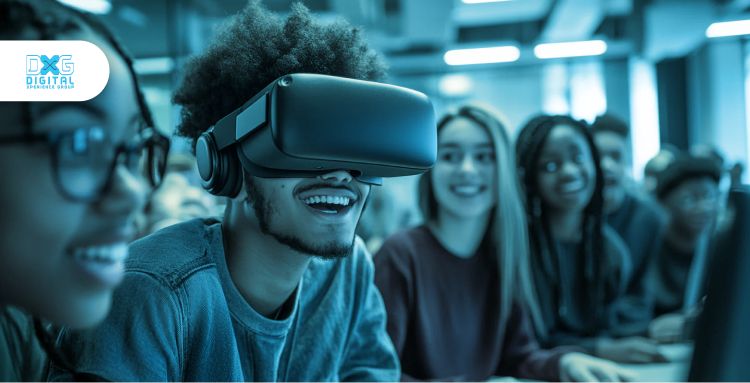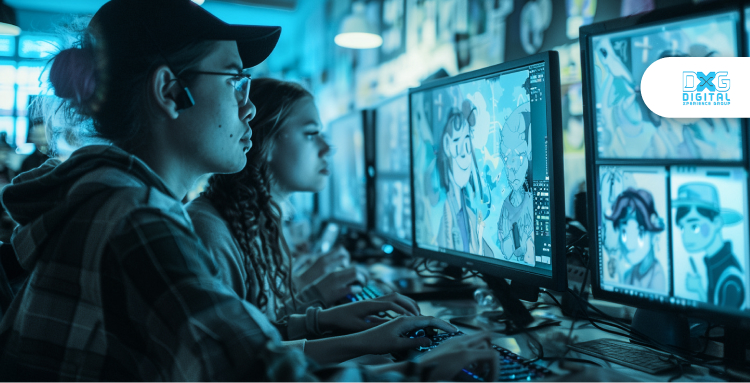How to Create Engaging Event Animations

January 14, 2025
How to Create Engaging Event Animations
Did you know how event marketers connect the dots between events and attendees? The answer is “event animations.” Nowadays, the world of event marketing is evolving into creating engaging event animations. As an event marketer, after years of experience, I can finally say that event planners are now more into event animations for captivating audiences.
When event marketers know their audience, they show their message through event animation for better visuals and create a long-lasting event experience for the attendees. An engaging event must have captivating storytelling, vivid visuals, and smooth animation - all align to fulfill your event goal. But how can you create such engaging event animation? Let’s decode the key factors associated with event animation to captivate both on-site and virtual audiences.
1. How can you understand your audience?
When you understand the audience, creating engaging event animations that resonate and enhance the overall event experience becomes easier. Knowing your audience allows you to create animations specifically designed to appeal to their interests, preferences, and emotional triggers. This is how you enhance engagement and make the content more relatable. Here’s a breakdown of how to effectively achieve it:
Research and demographics
Animations that reflect the demographics and behaviors of your audience can lead to higher levels of participation and satisfaction. For example, younger audiences might prefer vibrant, interactive animations, while older attendees may appreciate more subtle and elegant designs.
So, conduct thorough research and analyze demographic data, interests, and behavior patterns of your target market. Surveys, focus groups, and social media insights can provide valuable information about what makes your audience vigilant and interested.
How to align animation themes with audience expectations
Different segments may have different preferences for animation styles and content types. Keep a theme for animations for specific groups. It increases engagement. When attendees see content that reflects their values or experiences, they are more likely to connect with the event on a personal level.
For instance, a corporate conference might benefit from professional animations, while a creative festival could embrace bold, artistic visuals. Infuse animations with emotional elements that connect with the audience on a deeper level, creating a stronger engagement. You must Maintain consistency in color schemes, typography, and design elements to align with brand identity and reflect the event theme.
NOTE: Once the animation is done, gather feedback from attendees during or after the event to see how well they connected with them. Use their feedback to improve future animations so they resonate even more with what the audience loves.
2. What Is The Role of Storytelling in Animations?

Now, let's talk about storytelling, which is an important part of animation since it ties audiences to characters and tales. Here's an exploration of how storytelling contributes to developing engaging storylines and creating emotional bonds in animations.
Crafting Compelling Narratives
In storytelling, you need to create relatable characters. They must have some distinct character and motivation. As the characters develop, the audience should connect with them on a personal level. Effective character development transforms animated figures into individuals that viewers care about, making their experience interesting and meaningful.
Work on creating a well-defined plot. It means following a structured narrative journey—setup, conflict, and resolution—to lead the audience through the story. The use of color, lighting, and movement can convey emotions and set the tone for the story.
For instance, vibrant colors resemble joy, while darker tones can signal tension or sadness. This visual language enriches the narrative and creates a more immersive experience for the audience.
Creating Emotional Bond
Emotional Arc: When characters face challenges and evolve throughout the narrative, viewers become invested in their experiences—celebrating their achievements and empathizing with their struggles
Relatable Experiences: Good storytelling allows audiences to see parts of themselves in animated characters.
Sound Design and Music: Storytelling with effective sound design and music enhances emotional engagement. Voice acting brings characters to life, while music can amplify feelings of joy or tension within scenes. Using the latest audio-visual technology would be a great help in creating such an experience.
3. What Makes Animations Effective?

When it comes to creating effective animations, several key elements come into play that can significantly enhance their impact. Those key elements are:
Visual Appeal
First of all, give priority to high-quality visuals In a world overflowing with content, your content must be concise. Animations with brilliant colors, dynamic motions, and detailed design features let you stand out from the crowd. consider how a well-crafted animation can elevate a simple message into a visually stunning experience that captures the audience’s imagination.
Relevance to Event Themes
Next up is relevance to event themes. The best animations align smoothly with the overarching theme of the event or presentation. For instance, if an event focuses on innovation, animations showcasing futuristic concepts will resonate more effectively than generic visuals.
Strategies for timing animations
Properly timed animations may provide a rhythm that leads the viewers through the story without overpowering them. Pauses or transitions, for example, might highlight essential points and assist viewers in absorbing information more thoroughly.
Use of Interactive Elements
Adding interactive features into animations can increase engagement even more. When viewers engage with animated content whether through clickable elements or choices, then they become active participants.
Augmented Reality (AR) and Virtual Reality (VR)
Finally, let’s talk about Augmented Reality (AR) and Virtual Reality (VR). These technologies take engagement to another level by immersing audiences in a three-dimensional (3D) animated environment. Imagine attending an event where you can explore animated elements around you or interact with characters as if they were real!
4. How to Implement Strategies for Audience Engagement?
Here’s how you can effectively approach the audience with these strategies:
Planning and Preparation
Start by gathering insights into your audience's demographics, interests, and preferences. Define what you want to achieve with your event. Are you aiming to educate, inspire, or entertain? Having clear objectives helps guide your planning and set goals. Allocate time for preparing and planning before execution, and set deadlines.
Customization for Impact
Create stuff that directly addresses the interests of various audience segments. For example, if part of your audience includes professionals in a specific field, include stories that address their unique issues and goals.
Post-Event Analysis
After the event, run a quick post-event analysis to see how well your engagement strategies worked. Use surveys or feedback forms to hear what attendees loved, what could be better, and how engaged they felt. Use this input to fine-tune future events. Your continuous improvements keep your audience coming back for more.
5. How Do You Choose the Right Tools and Techniques for Engaging Animation?

Here’s how you can choose the proper tools, skilled animation video maker, and pick animation techniques:
Choosing the right animation video maker: Finding the right person is a priority. Don’t hire someone the first person you meet. Take time, to go through their portfolios. Consider their expertise and knowledge about the latest trends and technology. Review their previous works to know if they meet your event goals and your expectations.
Interactive Motion Design: Unlike traditional animations that simply play on a loop, interactive designs respond to user inputs—like mouse movements, clicks, and scrolls. This creates a dynamic experience where viewers can actively participate rather than passively watch. Using them in your content is in demand nowadays.
User-generated Content Integration: user-generated content in your animations can significantly boost engagement. When users see their contributions reflected in the animation. Be it through comments, photos, or videos—they feel a deeper connection to the content. This not only enhances the sense of community but also encourages more interaction from the audience.
Choosing the appropriate Software: Tools like Rive are leading this charge, enabling creators to design interactive graphics that can be easily integrated into websites and apps. Along with Adobe After Effects, you can use to only or Vyond for simple explainer videos with drag-and-drop functionality
Animation Techniques: Utilizing effective animation techniques such as smooth Transitions, dynamic text animations, and infographic animation you can create animations that not only look great but also effectively communicate your message.
6. How does DXG help you in creating engaging event animation?
Investing in event animation is a wise decision to improve the success of communication and engagement. Do not settle for a mediocre event experience. Working with an experienced event consultancy may help you turn your presentations, business, or cultural events into genuinely memorable experiences.
